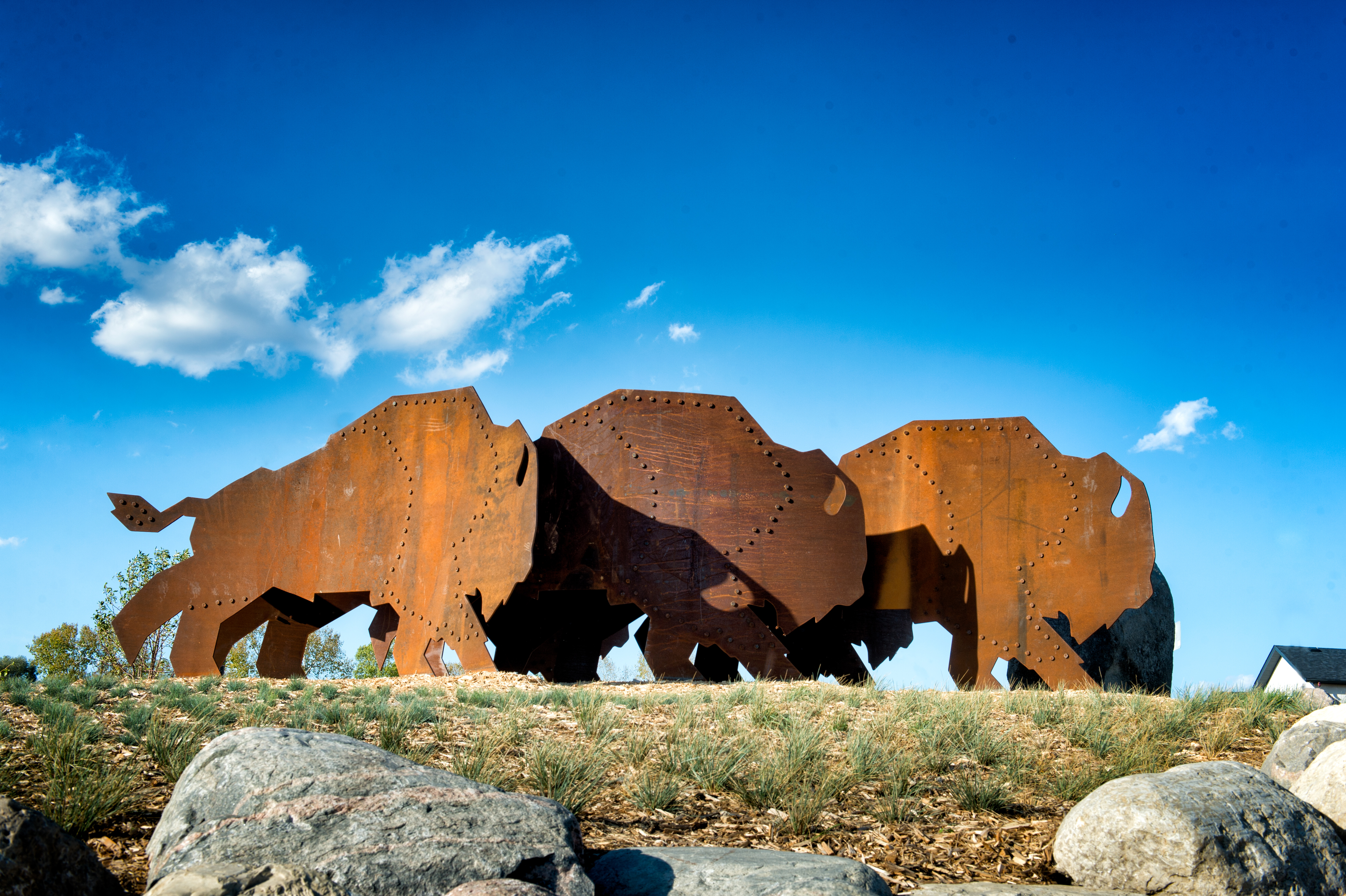
One of the most enticing features of RidgeWood West is the way the history of the land and local residents have been incorporated throughout the entire community, like the streets that have been named after fallen soldiers and veterans from the area. As an already incredibly unique and stunning community, RidgeWood West is home to a new, beautifully crafted sculpture that will become an iconic part of the community, Running Bison and the Rubbing Stone.
The Artist
David MacNair, a long-time Manitoba artist, was inspired by the history of the natural land in RidgeWood West and worked with a talented team to create the first roundabout sculpture consisting of five bison, weighing 1,820 pounds each, made of weathering steel that will turn into a beautiful dark brown rust colour.
“I grew up in the prairies, and have a deep appreciation for how our land was treated. I’ve always wanted to create a piece of art that represented how our heritage was benefitted by the bison,” says David.
“There isn’t many of them left in Manitoba anymore, and seeing how they once roamed this land freely we thought it only seemed fitting for this piece to be in RidgeWood West."
David has said this about his piece of work:
The Prairies were once home to vast numbers of Bison. Almost hidden in the grasses, we can still find the glacial stones against which they would rub themselves to remove their winter coats. Today, the rails crisscross the Prairies where these magnificent beasts once roamed. The steel and rivets used for this sculpture are a representation of this industry and the train cars we see today all across the Prairie landscape.
The Rubbing Stone
There are a number of stones identified in the prairies where the ground has been heavily impacted around a boulder, which are known as a rubbing stone. Free roaming bison would find boulders that they could rub against to help remove their winter coats, hence impacting the ground and revealing more and more of the boulder over time. The current rubbing stone that David has used in this sculpture is over 28,000 pounds, which can put into perspective that our prairies are ever changing.
RidgeWood West has incorporated as much of the original material from the natural land as possible into the current development. Every granite boulder that is a part of the roundabouts were taken from the area, which at one time would have been in Lake Agassiz – an extremely large glacial lake located in the middle of the northern part of North America, which included Manitoba.
“It was important that we use as much as we could from the land and create a piece of art that represents the history of this area,” says David. “Everything is local and it’s another way of acknowledging that what was taken from the land was used to build this powerful and historic visual for the residents.”
“All the materials we’ve used are extremely long lasting and won’t give anyone trouble for 150-200 years from now,” says David.
In the last two years that David has been working on the project, he believes that most exciting part is seeing it come to life in the community.
“It has been an amazing process from my original doodles to it becoming a monumental sculpture in this community is a great feeling.”